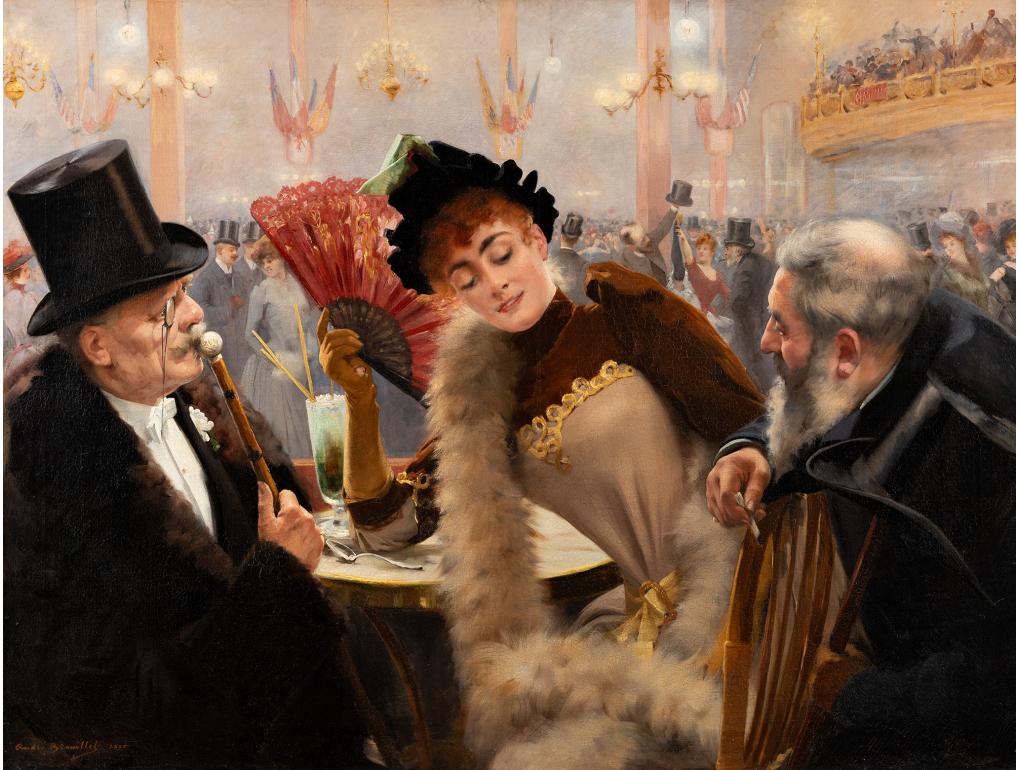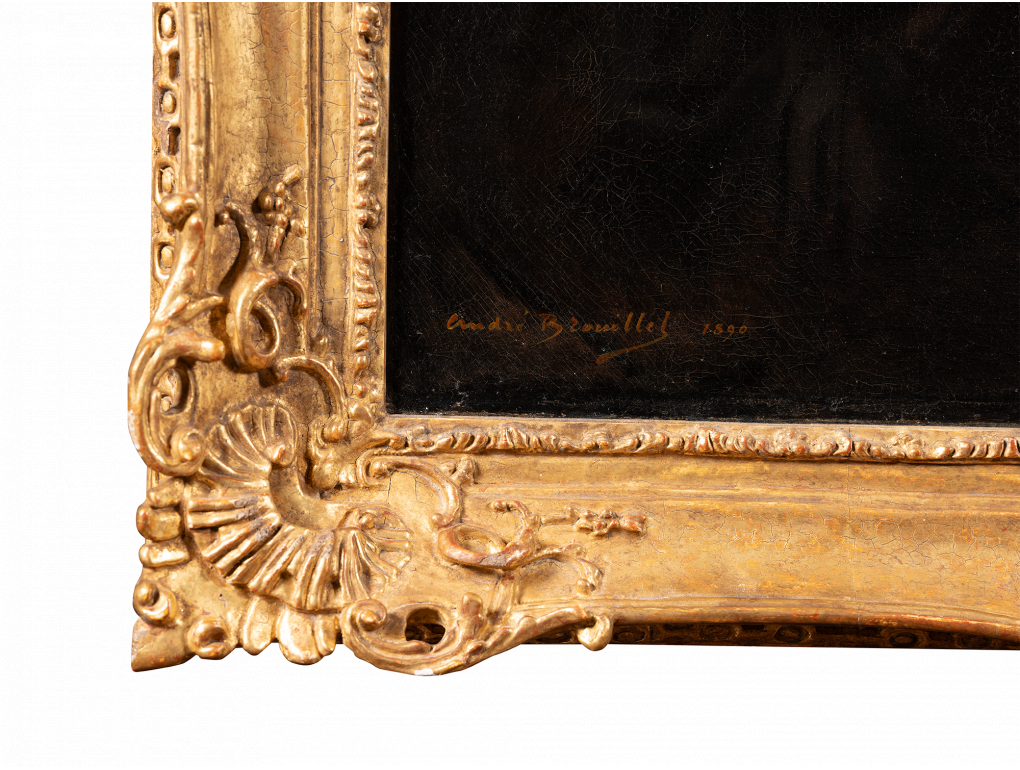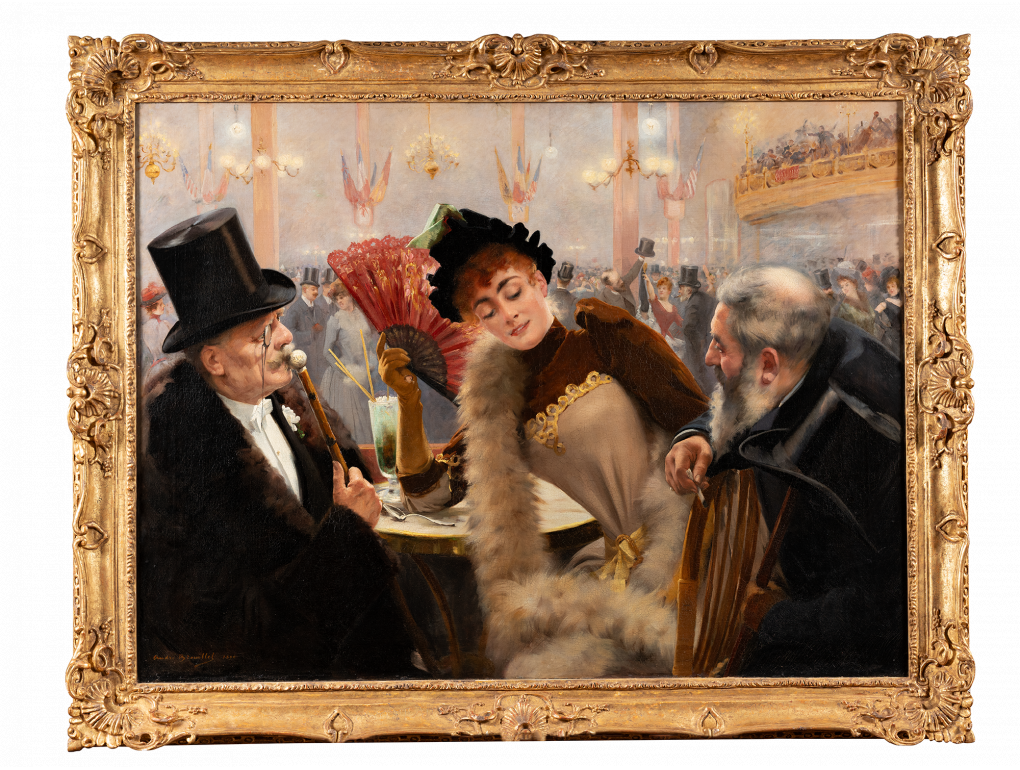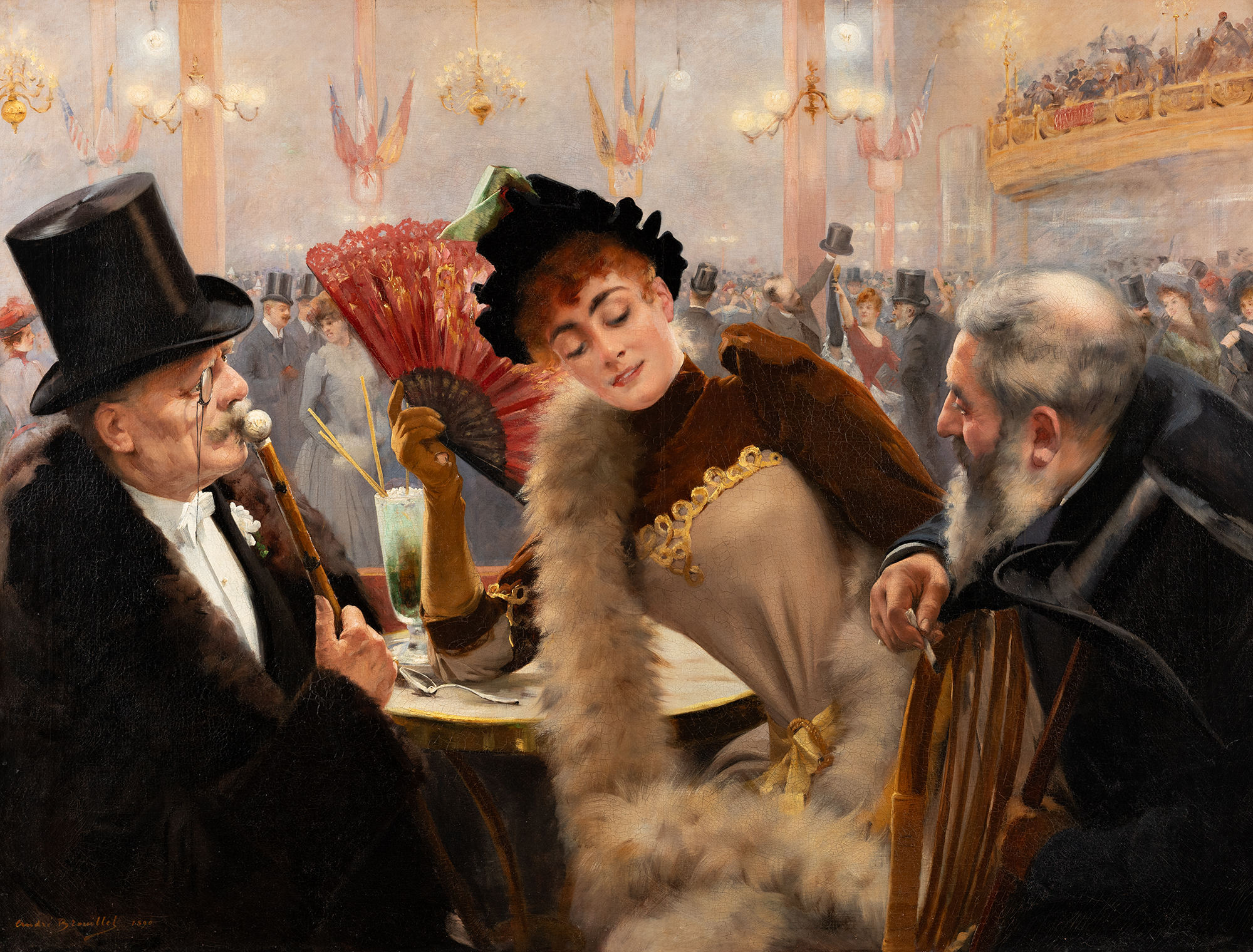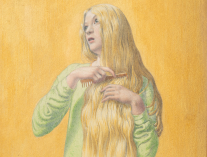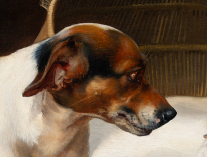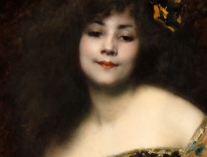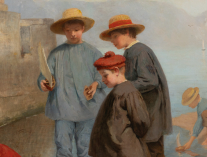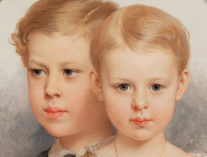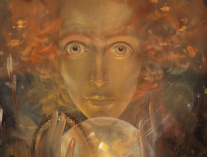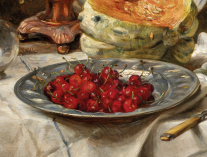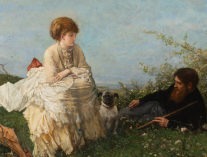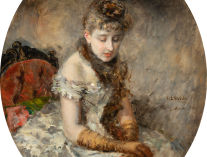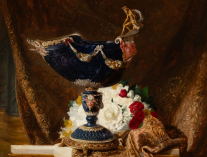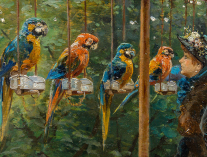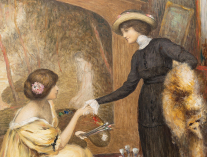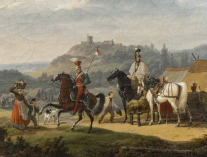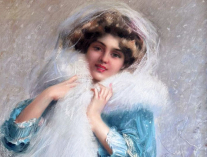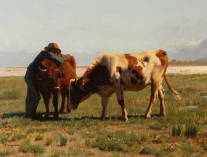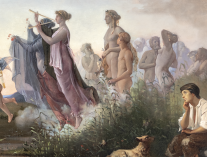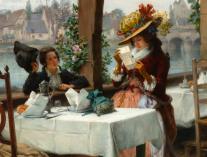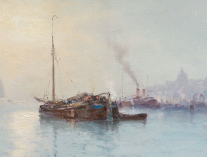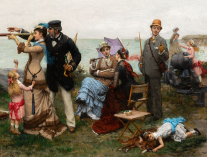Pierre-André Brouillet
Suzanne
Oil on canvas
André Brouillet painted the interior of the ballroom of the Moulin Rouge, recognizable by its pillars decorated with flags, its balcony from which the orchestra played, and its restaurant tables on the side, from where the public could see and hear everything. The Moulin Rouge opened at diner time. Dance performances happened until 10 pm. In the evenings, the Moulin Rouge could close late at night. Read more
The pretty Suzanne with her red hair looks like all these young performers of the new and popular music-hall dance called le "can-can" (La Goulue, Nana Sauterelle, Grille d’Egout, Jane Avril, Nini-Pattes-en-l’Air). She is dressed in a tight dress accentuating her slim and slender figure. Her charming face with her red lips, her fine nose, her arched eyebrows, makes her a subject of lust for the two old men with reverential demeanors. The title of the painting evokes directly, the well-known theme in Art History: Suzanna being spied by two elderly men. The biblical story taken from the Book of Daniel is diverted by the painter, in a humorous way, giving his heroine the role of a lady of the night.
The background of the painting is bustling with a colorful crowd. Professional dancers mix with the bourgeois clientele. One dancer is performing the most popular step of the "can-can" dance, which is the grand écart on one leg. The dancer’s kick in the air holds a customer’s top hat.
Exhibited in room XXI at the Paris Salon, the present painting captivated André Brouillet’s contemporaries. All the illustrated magazines echoed its display and offered to their readers a reproduction of the painting, drawn by the artist, engraved by Charles Baude, or photographed.
A journalist named Steck gave the list of the owners of the paintings before the opening of the Salon. Suzanne was said to belong to the witty journalist Aurélien Scholl (1833-1902), as a souvenir of his "dear Moulin Rouge". Aurélien Scholl was a very famous chronicler of Parisian 4 life. As a regular customer at the Moulin Rouge, he most likely commissioned the painting. He is recognizable by his profile, his mustache, and his monocle, at Suzanne’s left side.
Firmin Javel, « Salon de 1890 », L’art français : revue artiste hebdomadaire, 30 avril 1890, p. 16 (représentation photographique de notre tableau, np.).
Olivier Merson, « Le salon de 1890 », Le Monde illustré, 3 mai 1890, p. 272 (reproduction gravée par Charles Bande d’après notre tableau, p. 284).
Pierre Paget, « Le Salon de 1890 », L’Illustration, 3 mai 1890, n°2462, p. 379 (reproduction photographique, p. 393).
Exposition des Beaux-Arts, Salon de 1890, Catalogue illustré. Peinture Sculpture, Paris, Ludovic Baschet, 1890, p. 7 (représentation dessinée du tableau par André Brouillet, p. 81).
Armand Dayot, Le Salon de 1890, cent planches en photogravure par Goupil et Cie, Paris, Boussod, Valadon & Cie Editeurs, 1890, pp. 32-33 (reproduction photogravée, p. 17).
Albert Wolff, Le Figaro Salon, Paris, Goupil et Cie, Boussod, Valadon & Cie Successeurs, 1890, p. 44 (reproduction photogravée, p. 22).
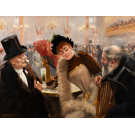
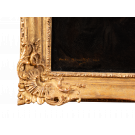
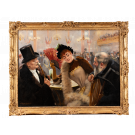
Our artwork available
93400 Saint-Ouen sur Seine
